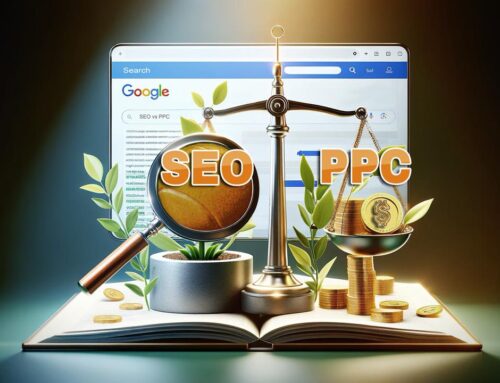A content plan is a strategic roadmap that outlines the goals, objectives, and tactics for creating, distributing, and promoting content across various digital channels. It serves as a guide to ensure that your content is well-planned, well-organized, and optimized to achieve your desired results. In this article, we’ll discuss the key elements of a content plan and the essential steps to create one.
1. Setting Content Goals and Objectives
Before diving into the content planning process, it’s crucial to establish your goals and objectives. These will help you create a content plan that aligns with your overall marketing strategy and delivers the desired outcomes.
Goals
Goals are high-level, overarching aims that you want to achieve through your content. Examples include:
- Increasing brand awareness
- Generating leads
- Engaging with your target audience
- Establishing thought leadership
- Driving website traffic
Objectives
Objectives are specific, measurable targets that will help you reach your goals. They should be SMART (Specific, Measurable, Achievable, Relevant, and Time-bound). Examples include:
- Generate X number of leads per month
- Increase website traffic by Y% over the next quarter
- Achieve a Z% engagement rate on social media
2. Defining Your Target Audience
To create content that resonates with your audience, you must first understand who they are. This includes:
- Demographics: Age, gender, location, education, and income level
- Psychographics: Interests, values, attitudes, and lifestyles
- Pain points and challenges: What problems does your target audience face that your product or service can solve?
3. Conducting a Content Audit
A content audit involves evaluating your existing content to identify gaps, strengths, weaknesses, and opportunities for improvement. It helps you:
- Determine the types of content that perform best
- Identify content gaps that need to be filled
- Uncover opportunities for repurposing or updating existing content
4. Developing a Content Strategy
Based on your goals, objectives, target audience, and content audit findings, develop a content strategy that outlines:
- Content types: Blog posts, articles, videos, podcasts, infographics, etc.
- Content formats: Long-form, short-form, listicles, how-to guides, etc.
- Content themes: Topics and subtopics that align with your target audience’s interests and needs
- Distribution channels: Owned, earned, and paid channels for promoting your content
5. Creating an Editorial Calendar
An editorial calendar is a schedule that outlines when and where you will publish your content. It helps you:
- Plan and organize your content production
- Ensure consistency in your publishing frequency
- Coordinate content across multiple channels and formats
- Allocate resources and deadlines for content creation and distribution
6. Establishing a Content Creation Process
A well-defined content creation process ensures efficiency and consistency in producing high-quality content. It includes:
- Assigning roles and responsibilities: Writers, editors, designers, videographers, etc.
- Setting guidelines for voice, tone, and style
- Developing a workflow for content ideation, creation, review, and approval
- Implementing a system for tracking and managing content assets
7. Measuring and Analyzing Content Performance (Continued)
Tracking the performance of your content is essential to determine its effectiveness and optimize your content plan. Key performance indicators (KPIs) to track include:
- Traffic: Pageviews, unique visitors, time on page, bounce rate
- Engagement: Social shares, likes, comments, click-through rate
- Conversion: Leads generated, sales, newsletter sign-ups, downloads
- SEO: Keyword rankings, organic traffic, backlinks
Analyzing Performance Data
Once you have gathered data on your KPIs, analyze the results to identify trends, strengths, and areas for improvement. Some questions to ask during this analysis include:
- Which types of content generate the most engagement, traffic, or conversions?
- Are there specific topics or formats that resonate better with your audience?
- How does the performance of your content differ across various channels or platforms?
Tools for Tracking and Analysis
There are various tools available that can help you track and analyze your content performance. Some popular options include:
- Google Analytics: A comprehensive web analytics tool that provides insights into website traffic, user behavior, and conversions
- Social media analytics: Built-in analytics tools on platforms like Facebook, Twitter, LinkedIn, and Instagram that provide insights into your content’s performance on social media
- SEO tools: Platforms like Moz, SEMrush, or Ahrefs that provide data on keyword rankings, organic traffic, and backlinks
By regularly tracking and analyzing your content performance, you can make data-driven decisions to optimize your content plan and maximize the return on your content marketing efforts.
8. Adjusting and Updating Your Content Plan
Based on your performance analysis, make necessary adjustments to your content plan. This may involve:
- Refining your content strategy: Update your content themes, types, and formats to better resonate with your audience and achieve your objectives
- Enhancing distribution and promotion: Identify new channels or tactics to increase the visibility and reach of your content
- Updating your editorial calendar: Revise your publishing schedule or frequency to better align with your goals and resources
Iterative Process
Remember that content planning is an iterative process. Regularly review your plan, analyze your performance, and make adjustments as needed to continuously improve your content marketing efforts.
9. Repurposing and Updating Content
Maximize the value of your existing content by repurposing or updating it. This can help you:
- Reach new audiences by presenting content in different formats or channels
- Refresh outdated information or add new insights to keep content relevant and valuable
- Boost SEO by improving the quality and depth of your content
Repurposing Ideas
Some ideas for repurposing content include:
- Transforming a blog post into an infographic, video, or podcast
- Combining several related blog posts into an ebook or whitepaper
- Sharing content snippets on social media or email newsletters
10. Encouraging User-Generated Content
User-generated content (UGC) is a valuable asset that can help you expand your content library and create authentic connections with your audience. Encourage UGC by:
- Hosting contests or giveaways that encourage user submissions
- Featuring customer stories or testimonials on your website or social media channels
- Inviting guest contributors to create content for your blog or other platforms
Final Thoughts
A content plan is an essential component of a successful content marketing strategy. By setting clear goals and objectives, defining your target audience, conducting a content audit, developing a content strategy, creating an editorial calendar, establishing a content creation process, measuring and analyzing performance, adjusting your plan, repurposing content, and encouraging user-generated content, you’ll be well on your way to achieving your content marketing goals.










